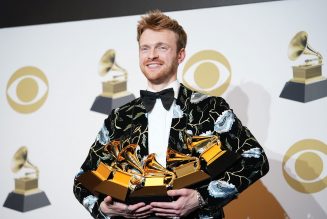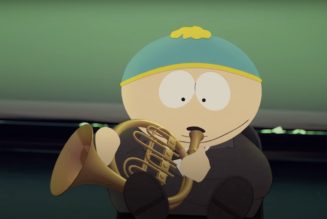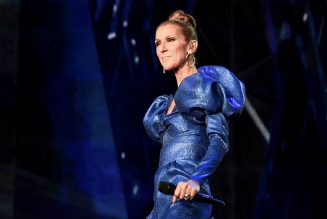
The beautiful story, directed by Glen Keane, features spritely and often moving songs by Chris Curtis, Majorie Duffield and Helen Park, and a luminescent score by Oscar-winner Steven Price.
For Soo, who is Chinese-American, the story of Chang’e was familiar — up to a point. “We’ve never seen Chang’e like this before. We know what happens until she gets to the moon, but we don’t really know what happens after that,” she says. “With this version, there’s elements of science-fiction in it, elements of the myth, elements of the Chinese culture, and that all culminates into this wonderful version of how we see her now.”
Soo talked to Billboard about what Earth-bound stars inspired her performance, how Hamilton creator Lin-Manuel Miranda helped prepare her, and the significance of a movie featuring an all-Asian cast.
Our first sighting of Chang’e is when she performs this delicious pop song “Ultraluminary” before her moon minions. Who did you look toward for inspiration?
The song was really the first thing that I heard in terms of what to expect from this character. The feeling that you get when you see Chang’e for the first time is amazing. I would call it like the best concert of all time. Her introduction is so fantastic. I definitely drew inspiration from all of the great female diva queens out there: Beyonce, Katy Perry, Taylor Swift, Selena Gomez, Ariana Grande, Lady Gaga — all of these incredible artists who have found their own voice and their own personality in terms of their work and their performance.
You also have fun with “Hey Boy.” It’s all swagger and a fun mix of singing and spoken word.
That song is drawing the lines of the competition. It’s the first time that we really see she’s not to be messed with, but, also, she has a lot to lose. She’s been waiting for a really long time to be reunited with her husband, Houyi. She’s covering up some inner-vulnerability that she might have. She’s compensating for that, especially in a song like that.
[Minor spoilers ahead] Your character goes through such a journey. Very early on, you realize she and Fei Fei are grieving. In many ways, the movie is a meditation on grief.
What’s so beautiful about a character like Fei Fei is she’s doing all of this out of the love for her mother and her family. This is not just about her own personal journey. What’s so beautiful about her relationship with Chang’e is that you have two really strong-willed female characters who have an idea of what they need in order to move on in their lives and feel like they’re secure on their own two feet. … Then they come to realize that they’re actually way more similar than they thought. And not only that, they need each other in order to heal. There’s a message there in reaching out to someone who you may not agree with, who you may not know, in order to find healing. That love and community might come in some very surprising places.
Totally switching topics, Chang’e’s wardrobe is amazing and very fashion-forward. How did that help you get into character?
They’re fabulous! They were designed by a very famous Chinese fashion couture designer, Guo Pei. From the minute that I started seeing these sketches, I was like, “Oh, I see who this person is.” That was the easy part. I didn’t have to search very far for inspiration because it was all there in the drawings and the music and everything that I was seeing they were bringing in.
Did you dress up to go into the studio to record your part?
No. I would wear sweatpants, because the benefit of being in an animated film is you don’t have to dress up to go to work. This story required actually a lot of movement on my part. Once I started really getting into character, we were really working and jiving. I really felt like I had to move my body in order to achieve some of the vocal things that I did, because it’s so heightened and theatrical in a way.
What was your span of time working on this?
My first time in the studio was maybe around 2017, 2018. I finished it literally in my closet, surrounded by my winter coats and shoes, during the pandemic. It was the last part of ADR (automated dialog replacement). It was very humbling and, at the same time that made me realize, “Wow, this really is coming full-circle,” because when I was a kid, all I would do was hang out in my closet and make up voices and play with my stuffed animals.
Over the Moon features an all Asian and Asian-American cast. What did that mean to you, and is there a greater message here at a time when Hollywood needs more diversity?
It just goes to show you that it’s what people want to see. Crazy Rich Asians was phenomenal in so many ways because it really not only gave people like me and millions of other people a reason to feel seen and recognized, but also to feel like there’s a desire for this. There’s a way to make money off of this. It’s not just we’re going out on a limb to tell a diverse story. Diverse stories are actually what people want to see. Not only that, it’s what we should see. Art can be entertaining, but I think that there’s more there. We have an obligation to tell stories that reflect who we are as a community, as a people, as a population.
Previous to this, your only animation experience was as a villager in Moana. Did that help prepare you for Over the Moon?
I was so grateful to Lin because he asked me to do some demos for Moana when they were developing it. I learned so much about the process that it takes to create an animated film. The animation itself is just a feat of engineering. One of the coolest days was when I got to see some of the music being recorded for Moana, and I watched the orchestra play. It really just made me realize a bunch of people who are really good at what they do are coming together to tell this story and they couldn’t have done it without each other. It’s a group, collaborative effort, and it made me so excited to explore that more. When Over the Moon came along, I was like, yes, absolutely. This is like the dream of my childhood to be involved in something like this.
Broadway is now closed through the end of May. How are you dealing with that?
Honestly, the most important thing is to make sure that we’re all safe and when we gather again that we feel like we’re being taken care of, health-wise. For me, I just feel like I need to be OK with missing it. It’s like anything: You don’t realize how good it is until it’s gone. I always knew how good it was and what a great job I had and all the great opportunities that I had. But I don’t think I truly comprehended how important it can be to be able to connect human beings together.
There’s something that we lose when we lose live performance, which is the ability to just gather in a room with a bunch of strangers and have an experience together and go on a journey together.
There’s lots of theaters right now that are struggling. I know that there’s so many causes right now where you can donate your money and your time and your efforts, but there’s also a lot of theaters that might close so we need the support of the community. The more that people can advocate to their senators, to their politicians, to fight for the arts for financial aid, it’s really important.










